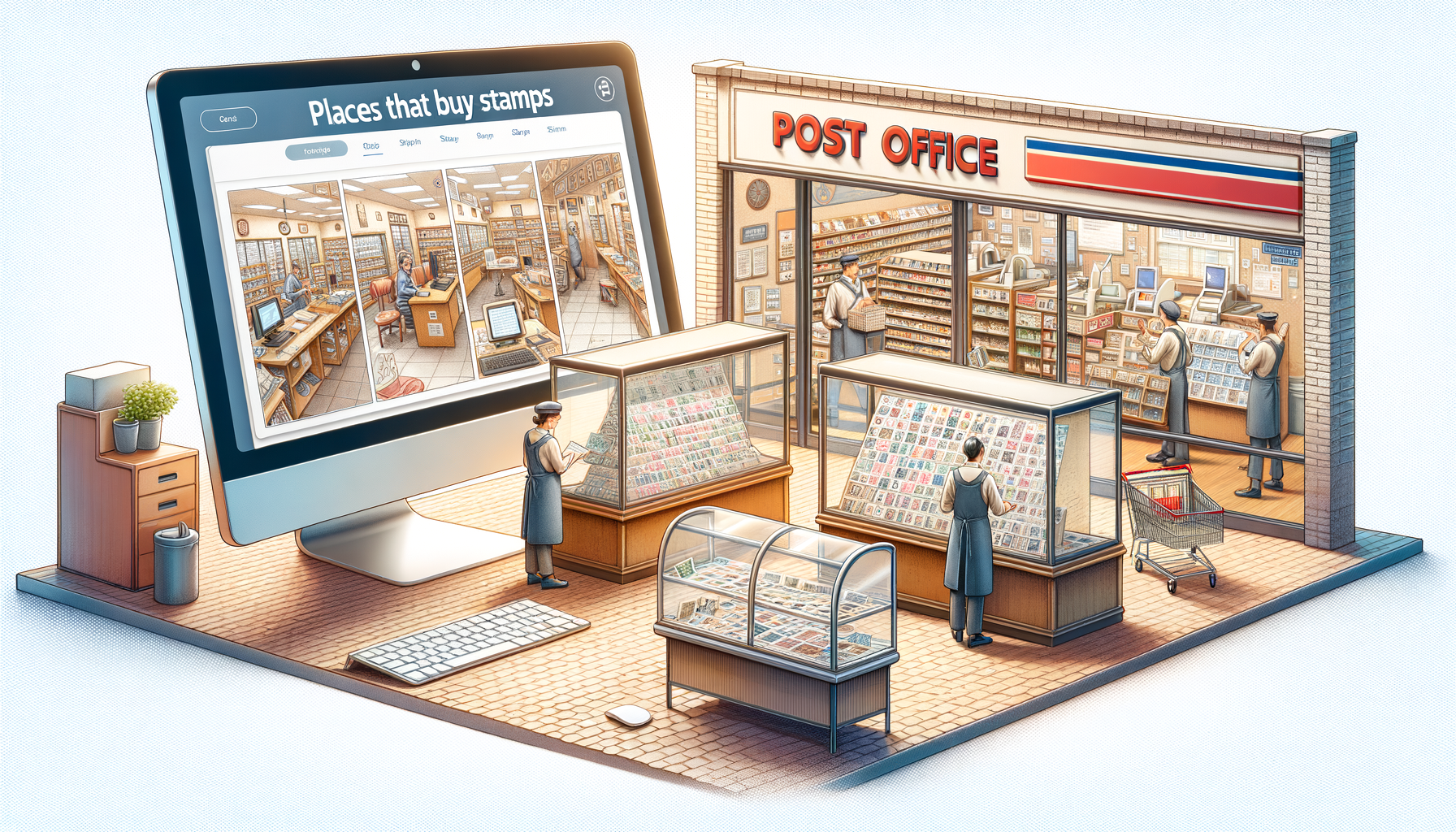Postage stamps have played a crucial role in communication since their inception in the 19th century. The first adhesive postage stamp, the Penny Black, was issued in the United Kingdom in 1840. It revolutionized the postal system by standardizing the cost of sending mail. This innovation quickly spread across the globe, leading to the adoption of similar systems in various countries. Stamps became not only a means of payment for postal services but also a tool for cultural expression. They often depicted national symbols, historical events, and notable figures. Over time, stamps evolved in design and function, reflecting technological advancements and societal change
Transition from Physical to Digital Communication
The rise of digital communication has significantly impacted the use of traditional postage stamps. Email, instant messaging, and social media have reduced the need for physical mail. This shift has led to a decline in the volume of letters sent through postal services worldwide. Despite this, stamps have maintained their significance in certain areas, such as legal documents and official correspondence. The future of postage stamps lies in adapting to these changes while preserving their historical value. Postal services are exploring innovative ways to integrate stamps into the digital age.
Current Trends in Stamp Usage
Today, postage stamps are used for more than just mailing letters. They serve as collectibles, with philatelists valuing rare and unique designs. Commemorative stamps celebrate significant events, anniversaries, and cultural milestones. These limited-edition releases often attract collectors and enthusiasts. Additionally, stamps play a role in promoting tourism and national identity. Countries issue stamps featuring landmarks, wildlife, and cultural heritage to attract visitors. The future of postage stamps will likely see a continued emphasis on these aspects, even as traditional mail declines.
The global e-commerce boom has also influenced stamp usage. Packages and parcels require postage, ensuring that stamps remain relevant in logistics. Online shopping has increased the demand for postal services, albeit in a different capacity than before. Stamps are adapting to this shift by incorporating technology and enhancing security features. The integration of QR codes and tracking systems is becoming more common. These innovations aim to streamline the mailing process and improve efficiency.
As we look to the future, the role of postage stamps will continue to evolve. They must balance tradition with modern demands, ensuring their relevance in a rapidly changing world. The future of postage stamps will depend on their ability to adapt to technological advancements and societal shifts. Postal services must innovate while preserving the cultural and historical significance of stamps. This delicate balance will determine the trajectory of stamps in the coming years. The evolution of postage stamps is a testament to their enduring importance in communication and culture.
Technological Innovations in Stamp Design

Technological advancements have significantly influenced the design and functionality of postage stamps. One notable innovation is the incorporation of QR codes. These codes provide additional information and enhance user interaction. By scanning a QR code on a stamp, users can access multimedia content related to the stamp’s theme. This could include videos, historical data, or interactive features. Augmented reality (AR) is another emerging trend in stamp design. AR technology allows users to experience a virtual overlay when viewing a stamp through a compatible device. This interactive experience can bring historical events or cultural themes to life.
Smart Stamps and Blockchain Technology
Smart stamps represent a significant leap in postal technology. These stamps incorporate electronic components that enable advanced functionalities. For instance, smart stamps can include tracking capabilities, allowing senders and recipients to monitor mail in real-time. This feature enhances security and reliability in postal services. Blockchain technology is also being explored in stamp design. Blockchain can provide a secure and transparent method for verifying the authenticity of stamps. This is particularly valuable for collectors and philatelists concerned about counterfeit issues. By embedding blockchain technology, stamps can offer a verifiable history of ownership and provenance.
Eco-friendly and Sustainable Materials
Environmental concerns are increasingly influencing the production of postage stamps. Postal services are exploring eco-friendly materials to reduce the environmental impact of stamp production. Biodegradable and recyclable materials are being considered as alternatives to traditional paper and ink. Additionally, water-based inks and sustainable adhesives are being developed to minimize ecological footprints. These innovations align with global efforts to promote sustainability and reduce waste. By adopting eco-friendly practices, postal services can contribute to environmental conservation while maintaining stamp quality.
The integration of sustainable materials also reflects a broader trend towards corporate responsibility. Consumers are becoming more conscious of environmental issues and expect businesses to act responsibly. By prioritizing sustainability, postal services can enhance their public image and meet consumer expectations. This shift towards eco-friendly practices is likely to continue as environmental awareness grows.
The evolution of stamp design demonstrates the adaptability of postal services to modern challenges. By embracing technological innovations, stamps can remain relevant in a digital age. These advancements not only enhance functionality but also enrich the user experience. As technology continues to advance, the potential for further innovation in stamp design is vast. Postal services must remain proactive in adopting new technologies to meet changing consumer needs. The integration of technology and sustainability in stamp design represents a forward-thinking approach to modern postal challenges. This approach ensures that stamps continue to serve as valuable tools for communication and cultural expression.
The Role of Postage Stamps in a Digital World

In the digital age, postage stamps continue to play a vital role in e-commerce and logistics. The rise of online shopping has increased the demand for parcel delivery services. Stamps are essential for processing and tracking these shipments. They ensure that packages reach their destinations efficiently and securely. The future of postage stamps involves adapting to the needs of a rapidly growing e-commerce sector. Postal services are integrating advanced tracking systems and digital payment options to enhance efficiency. This integration helps streamline operations and improve customer satisfaction.
Collectibility and Philatelic Interest
Despite the decline in traditional mail, stamps remain popular among collectors and philatelists. Collectors value stamps for their historical significance, artistic design, and rarity. Philately, the study and collection of stamps, continues to attract enthusiasts worldwide. Commemorative stamps, issued to mark significant events or anniversaries, are particularly sought after. These limited-edition releases often feature intricate designs and unique themes. The future of postage stamps will likely see continued interest in philately as a hobby. Postal services may issue more thematic and commemorative stamps to cater to collectors.
Integration with Digital Payment Systems
The integration of postage stamps with digital payment systems is an emerging trend. This development aims to simplify the process of purchasing and using stamps. Digital platforms allow users to buy and print stamps from the comfort of their homes. This convenience reduces the need for physical visits to post offices. Additionally, digital payment systems offer secure and efficient transactions. The future of postage stamps may involve further integration with mobile payment apps and online platforms. This shift aligns with the broader trend towards digitalization in various sectors.
The use of digital stamps is also gaining traction. Digital stamps function similarly to traditional stamps but exist in electronic form. They can be applied to emails, digital documents, and online transactions. This innovation reflects the changing nature of communication in a digital world. Digital stamps offer a modern alternative to physical stamps while preserving their symbolic value.
The future of postage stamps will depend on their ability to adapt to technological advancements. As digital communication continues to evolve, stamps must find new ways to remain relevant. By embracing digital integration, stamps can continue to serve as a bridge between traditional and modern communication. This adaptability ensures that stamps maintain their significance in both personal and commercial contexts. The ongoing evolution of postage stamps highlights their enduring importance in a rapidly changing world. Postal services must continue to innovate and adapt to meet the needs of contemporary society.
Challenges Facing the Postage Stamp Industry

The postage stamp industry faces significant challenges due to the decline in traditional mail services. The rise of digital communication has led to a decrease in letter volumes. Email, social media, and instant messaging have replaced many traditional forms of correspondence. This shift has reduced the demand for stamps used in personal and business communication. Postal services must adapt to this changing landscape to remain viable. They are exploring new avenues to sustain revenue and relevance in a digital age.
Competition with Digital Communication Platforms
Digital communication platforms pose a considerable challenge to the postage stamp industry. These platforms offer instant and cost-effective alternatives to traditional mail. Users can send messages, documents, and images with ease and speed. This convenience has diminished the role of physical mail in everyday communication. Postal services must find ways to compete with these digital platforms. They are investing in technology and innovation to enhance their offerings. By integrating digital solutions, postal services aim to attract and retain customers.
Balancing Tradition with Modernization
Balancing tradition with modernization is a critical challenge for the postage stamp industry. Stamps hold historical and cultural significance, representing national identity and heritage. However, they must also evolve to meet contemporary demands. Postal services are tasked with preserving the traditional value of stamps while embracing innovation. This balance requires careful consideration of design, functionality, and user experience. By maintaining this equilibrium, stamps can continue to serve as cultural artifacts and practical tools.
The industry is also exploring ways to modernize stamp production and distribution. Digital platforms and online services offer new opportunities for engagement. Postal services are leveraging these technologies to reach broader audiences. They are also experimenting with new materials and designs to appeal to modern consumers. These efforts aim to revitalize interest in stamps and ensure their continued relevance.
Addressing Environmental Concerns
Environmental concerns present another challenge for the postage stamp industry. The production and disposal of stamps contribute to environmental impact. Postal services are under pressure to adopt sustainable practices. They are exploring eco-friendly materials and production methods to reduce their carbon footprint. This shift aligns with global efforts to promote sustainability and environmental responsibility. By prioritizing eco-friendly practices, postal services can enhance their public image.
Consumers are increasingly aware of environmental issues and expect businesses to act responsibly. Postal services must respond to these expectations by implementing sustainable solutions. This approach not only addresses environmental concerns but also meets consumer demands. The adoption of sustainable practices is likely to continue as awareness grows. Postal services must remain proactive in addressing these challenges to ensure their long-term viability. The postage stamp industry must navigate these challenges to maintain its significance in a changing world.
Potential Future Developments

The future of postage stamps is likely to embrace customization and personalization. Consumers increasingly seek unique and personalized products. Postal services are responding by offering customizable stamp options. Customers can create stamps featuring personal images, logos, or messages. This trend caters to both individual and corporate clients. Personalized stamps add a personal touch to correspondence and marketing materials. They also serve as memorable keepsakes for special occasions.
Customization extends beyond design to include functionality. Postal services are exploring ways to tailor stamps to specific needs. This could involve integrating technology for enhanced tracking or security features. By offering personalized options, postal services can attract a diverse customer base. This approach aligns with broader consumer trends towards personalization.
Partnerships with Technology Companies
Collaborations with technology companies present new opportunities for the postage stamp industry. These partnerships can drive innovation and enhance service offerings. Technology firms bring expertise in digital solutions and advanced systems. By working together, postal services can integrate cutting-edge technologies into stamp design and distribution. This collaboration can lead to the development of smart stamps and digital platforms.
Partnerships can also facilitate the adoption of blockchain technology. Blockchain offers secure and transparent methods for verifying stamp authenticity. This is particularly valuable for collectors concerned about counterfeits. By leveraging technology partnerships, postal services can enhance their credibility and appeal. These collaborations can also streamline operations and improve customer experience.
Predictions for the Next Decade in Stamp Usage
The future of postage stamps will likely see continued evolution over the next decade. Technological advancements will play a significant role in shaping stamp usage. Digital integration will become more prevalent, offering new functionalities and conveniences. Stamps may incorporate advanced tracking systems and digital payment options. This integration will enhance efficiency and user experience.
Environmental sustainability will remain a priority for postal services. The adoption of eco-friendly materials and practices will continue to grow. This shift aligns with global efforts to reduce environmental impact. By prioritizing sustainability, postal services can meet consumer expectations and regulatory requirements.
The role of stamps in cultural expression and commemoration will persist. Commemorative and thematic stamps will continue to attract collectors and enthusiasts. These releases celebrate significant events and cultural milestones. They also serve as tools for promoting national identity and heritage.
The future of postage stamps will involve balancing tradition with innovation. Postal services must preserve the historical value of stamps while embracing modern demands. This balance will ensure that stamps remain relevant in a rapidly changing world. By adapting to technological and societal shifts, stamps can continue to serve as valuable tools for communication and cultural expression. The ongoing evolution of postage stamps highlights their enduring importance and adaptability.



